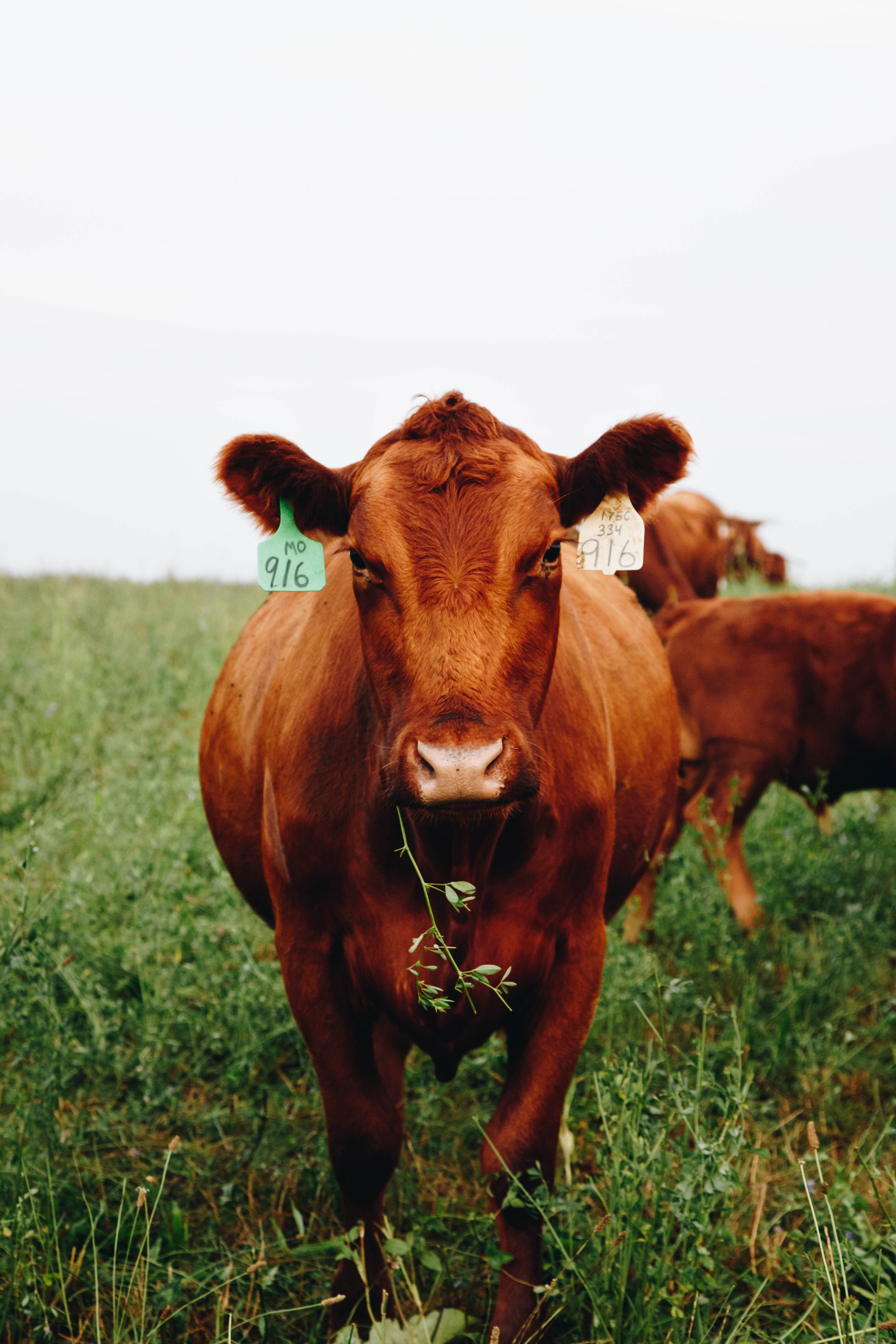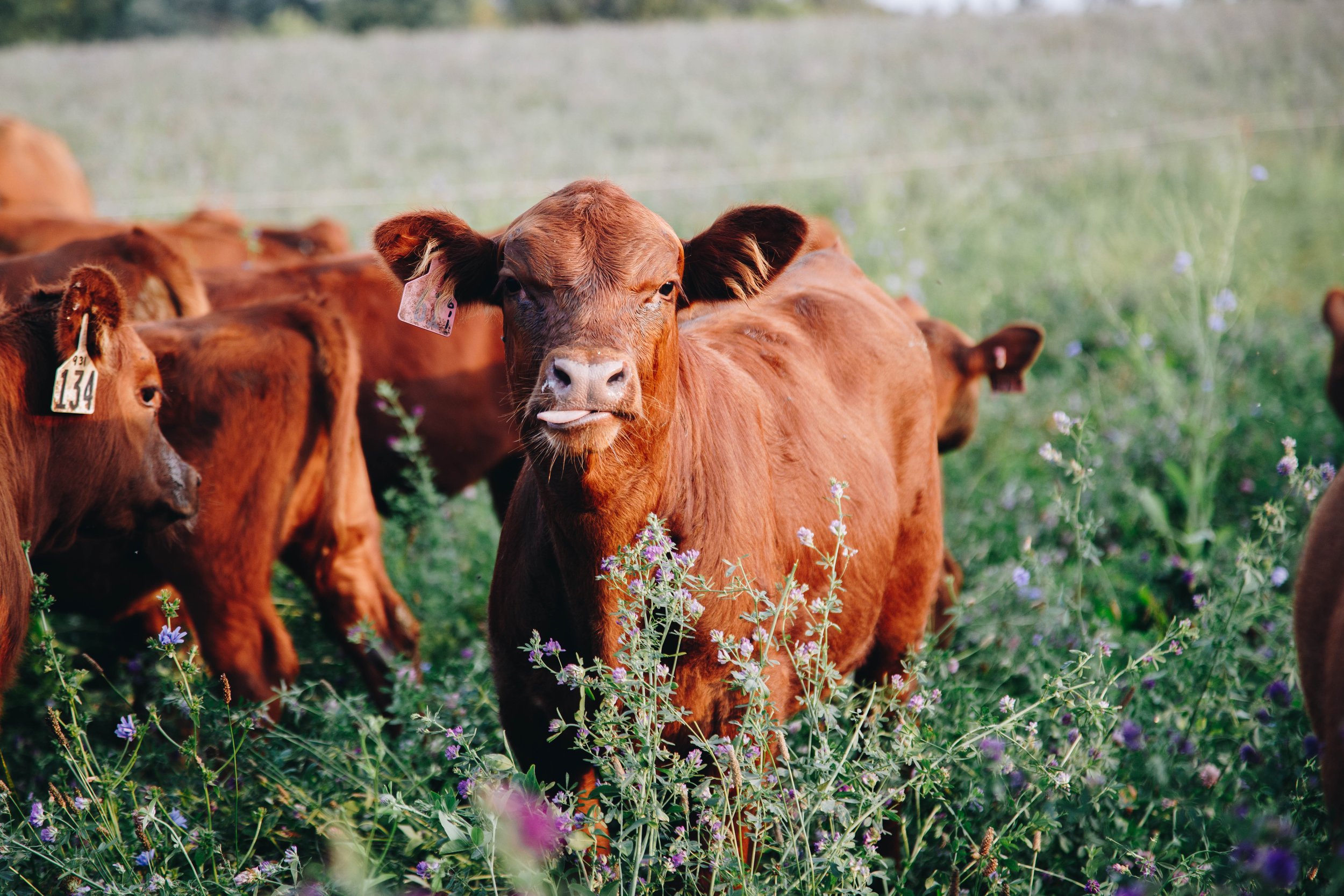What Regenerative Means to Grassfed Cattle Co.
Hello, this is Jared Luhman, farmer and owner of the Grass Fed Cattle Company. For those who don’t know, I host a podcast called the Herd Quitter Podcast where I interview farmers, ranchers and other industry experts who aren’t afraid to do things differently to make farming and ranching more profitable, enjoyable and sustainable. I recently interviewed Chris Kerston who is CEO of the Land to Market program which is doing an ecological outcome verification trying to provide concrete data on the improvements farmers are making to the land and then connect them with industry buyers who value that land management.
To hear the full conversation, you can listen here or on any podcast app.
During our conversation, something Chris said really surprised me. He explained there was a study done that found that many consumers associate regeneratively grown meat with lab-grown meat. I can see how that could be misunderstood so I am writing this blog to define what we mean by regenerative meat production. We do not mean lab-grown meat!
When we refer to regenerative, we are referring not just to the meat, but to the entire production model and specifically what those production practices do to our soil resources. Nature is beautiful in design and soil biology, plant life, and wildlife live together symbiotically and use water, nutrients, and sunlight in a manner that improves the soil. It resulted in highly fertile soils across the United States with incredibly diverse and productive ecosystems. However, when humans began to work the land, we broke the natural cycles that were sustaining and improving soils and actually brought our soils backward with our management. We released carbon, eroded nutrients, reduced plant and animal diversity and so on. I want to stop right there and say that none of this was done intentionally to destroy the planet. Farmers have always done the best they can with the knowledge they have to produce food, fuel and fiber for the growing population in the best way possible at an affordable price. This is not a “those are the bad guys and it’s their fault!” argument, I want that to be clear. But in recent years scientists and experts far smarter than me have learned so much more about how our management impacts the land and how we can work with nature rather than against it to continue to produce food, fuel and fiber while improving or “regenerating” the land.
This is what we mean by regenerative agriculture. It’s agriculture done in a way that actually improves the soil and moves us closer to the way it was when nature was in control. We will never be in a world allowed to be completely managed by nature again, however, we can mimic those natural systems as much as possible. Hundreds of years ago, massive herds of bison were moving together to protect themselves from predators. This resulted in the trampling of forage onto the soil surface to protect the soil and feed soil biology.
On our farm, we have replaced the bison with cows and the predators with electric fences. Historic native prairies consisted of hundreds of native plant species and we mimic this by planting a diversity of grasses, legumes and forbs into our new pasture stands. We see what many would consider to be weeds as adding to the diversity of our pastures and our cows’ diets. Because of the impact that the massive herds of bison had on the land, they often wouldn’t come back to the same ground for months or more. We manage in a way that livestock do not return to the same land until after the plants have had the opportunity to fully recover, grow leaves and shoot down deep roots. All of this improves the health and nutrient richness of our soil. These nutrient-rich soils along with the diversity of plants all contribute to a nutrient-rich diet for our cattle which makes nutrient-dense meat for you! So next time you hear us talk about regenerative meat you can be confident it’s a good thing!
Images by Greener Pastures






